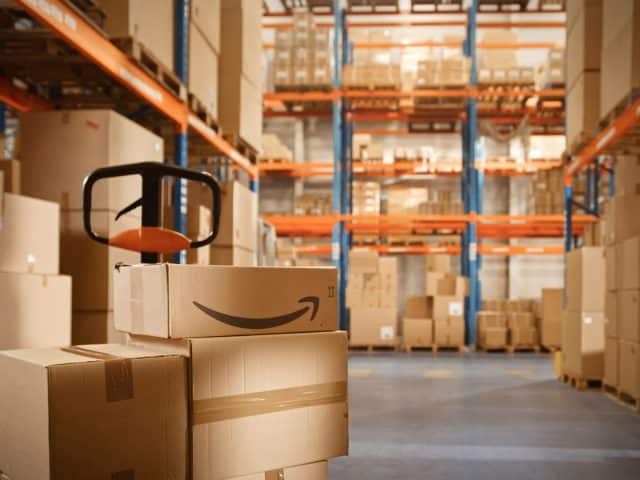
Significant Digits: August 2022
Too Much of a Good Thing
Amazon has been the flag bearer for the extremely high-performing Industrial sector for the past several years. It has already been an incredibly long run for the sector and it may not be over. The warehouse market evolved over the past several years and it may continue to trade at apartment-like cap rates and rental growth rates may continue to amaze us. For this to be true, the sector will need to refuel. The pause button was pushed this spring when Amazon announced that it plans to sublet some of its recently acquired warehouse space. The clear leader in the most rapidly growing sector somehow overstepped. It might be interesting to review some industrial sector history.
A Long Look Back
I recall leading a research group at an international advisory firm back in 2013. At that time, yes nine years ago, our group made, what seemed to be at the time, the wildly bold recommendation to consider speculatively building warehouses. Given the long history of warehouse performance up to that point, build-to-suit was the most aggressive position that you might expect to come out of a research group. We turned some heads with the idea of building warehouse — spec.
Our suggestion to spec-build warehouses was accompanied by a thorough explanation of how quickly this sector can respond to new opportunity and that the excitement could end with a quarter’s notice. We knew that major industrial developers had significant land banks and could start construction at the first signs of growth. Furthermore, the typical tilt-up building could be erected and put into service within months. For forty years, the industrial sector had not shown any prolonged periods of rent growth because supply could so quickly meet any rise in demand.
From the 1970s to the 2010s, warehouse property offered the highest cap rates and the lowest rental growth rates of the major sectors. Industrial holdings were considered boring investments that presented low risk and paid a good yield but offered little growth. Using data from CBRE-Econometric Advisors, Figure 1 shows that the average annual industrial rent growth between 1990 and 2010 was less than 1%. This chart compares that average growth rate to each annual rent growth rate since 2010.
Figure 1 — Source: CBRE-Econometric Advisors as of June 2022
During the last decade of repeated significant rent growth, industrial cap rates have fallen in both absolute and relative terms. According to Real Capital Analytics (RCA), during 1Q2008 Top Quartile Industrial properties sold at a 6.0% cap rate while Top Quartile Apartments sold for 5.2%. Warehouses offered 80 basis points (bps) more current yield than apartments. It is reasonable to believe that this was to offset lower expected rent growth rather than compensate for higher risk. During 1Q2022, Industrial cap rates were 4.0% compared to Apartments cap rates of 4.2%. Thus, Warehouse cap rates fell an absolute 180 bps and 100 bps relative to Apartments over this time.
In 2013, we thought the near-term future was very bright for the sector but were also aware that new supply can hit the market in months as opposed to years. Thus, we included caution in our optimistic presentation of industrial market conditions. Our concerns appear to have been unfounded as the sector has been on a ten year steady charge to be the most desirable sector.
The Last Decade
The recent performance of the industrial sector is so well known that the older history is completely forgotten or viewed as the old ways. The nature of warehouse investment changed dramatically during the twenty-teens. Today’s market is aggressively priced on the expectation that rents will continue to grow to support continued appreciation. The never ending prospect of e-commerce growth is the explanation that powers new investment into the sector.
Looking back at Figure 1, we see that industrial market change was not due to Covid but rather started almost a decade ago. The pandemic was a nitrous boost to this already fast-moving investment vehicle. As we entered 2022, warehouse cap rates fell below apartment rates for the first time in history. But we can see in Figure 2 that warehouse rates have been closing on apartment rates since 2010. This has been the industrial decade.
Figure 2 — Source: Real Capital Analytics as of June 2022
Amazon Two-Step

If Amazon is the top online sales performer during a rapidly expanding market at the time that warehouse space reaches its relative pricing max (yet to be determined if this is a peak), you might be shocked to see the headline that “Amazon Plans to Sublet Warehouse Space.” We are seeing that even the best operators can overstep the market by extrapolating a temporary trend.
From 1994 to 2019, Amazon developed and expanded its e-commerce business, among a collection of digital businesses. For the industrial market insight, we will focus on the sales and distribution part of the company. During its first 25 years, Amazon expanded North American warehouse space from zero feet to 187 million square feet. Its warehouse space expanded at a fairly steady pace as the company became increasingly successful in an expanding market segment. During 2020 and 2021, Amazon’s North American warehouse space grew from 187 million to 370 million square feet — a 98% increase.
Figure 3 — Source: Amazon 10K Filings from SEC.com as of May 2022
Figure 3 reveals Amazon’s pre-pandemic expansion rate as well as its recent expansion rate. Over the past two years, the firm acquired almost the same amount of fulfillment space as it did over its first 25 years. This was not a mistake but rather an aggressive attempt to keep up with the e-commerce expansion that occurred during 2020 and 2021. In an attempt to stay one step ahead of the growing online sales market, Amazon rapidly acquired space, which ultimately fueled the tight industrial market.
The bet that Amazon, and others, made was that the Covid surge in online retail was a structural expansion rather than a temporary response to the shutdown. The reality is that it was probably part structural and part temporary — only time will tell. As we entered 2022, the e-commerce surge subsided leaving some firms with excess capacity. In Amazon’s case, the excess is substantial enough to force the firm to seek sublet tenants to lighten the carry cost. Certainly, the online sales market will regain momentum but the current drop-off combined with recession concerns make the timing uncertain. The one thing that is evident for the first time in three decades is that Amazon’s fulfillment space is currently too much of a good thing.